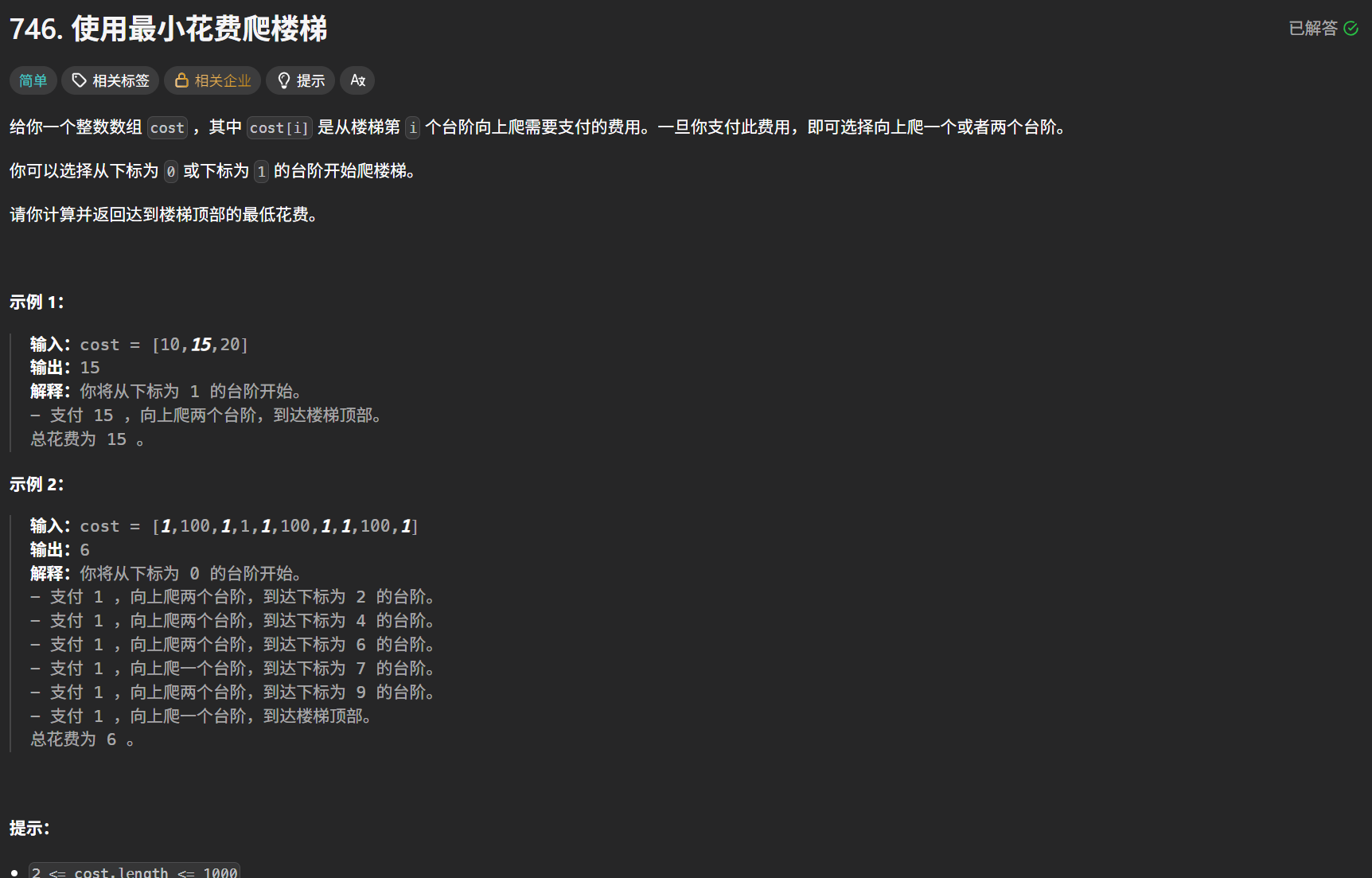最小花费爬楼梯
题目

根据
cost.length,我们不需要考虑特殊情况。
题目的意思在于爬到 c o s t . l e n g t h 的位置,需要花费多少,仅仅是爬到 c o s t . l e n g t h − 1 是不能直接到达终点的,还需要花费该位置的 数字 。
具体思路
- 最后一位的花费取决于
Math.min(cost[i - 2] + res[i - 2] , cost[i - 1] + res[i - 1] )之中最小的花费。 - 因此计算最后一位的过程中,还是需要计算前面所有的花费。那么也就是分为保存中间结果和不保存中间结果两种情况。
具体实现
class Solution {
public int minCostClimbingStairs(int[] cost) {
int[] res = new int[cost.length + 2];
// cost = [1,100,1,1,1,100,1,1,100,1]
// 0 0 1 2 2 3 3 4 4 5 6
for (int i = 2; i <= cost.length; i++) {
res[i] = Math.min(res[i - 1] + cost[i - 1], res[i - 2] + cost[i - 2]);
}
return res[cost.length];
}
}
这里我们保存中间的结果,最后返回结果即可。
class Solution {
public int minCostClimbingStairs(int[] cost) {
int pre = 0;
int next = 0;
int res = -1;
for (int i = 2; i <= cost.length; i++) {
res = Math.min(pre + cost[i - 2], next + cost[i - 1]);
pre = next;
next = res;
}
return res;
}
}
类似于斐波那契数列,这里我们使用两个变量来动态滑动数组的中间结果,减少空间复杂度。
class Solution {
public:
int minCostClimbingStairs(vector<int>& cost) {
vector<int> dp(cost.size() + 1, 0);
if (cost.size() < 2) {
return 0;
}
dp[0] = 0;
dp[1] = 0;
for (int i = 2; i <= cost.size(); i++) {
dp[i] = min(dp[i - 1] + cost[i - 1], dp[i - 2] + cost[i - 2]);
}
return dp[cost.size()];
}
};

评论(0)
暂无评论